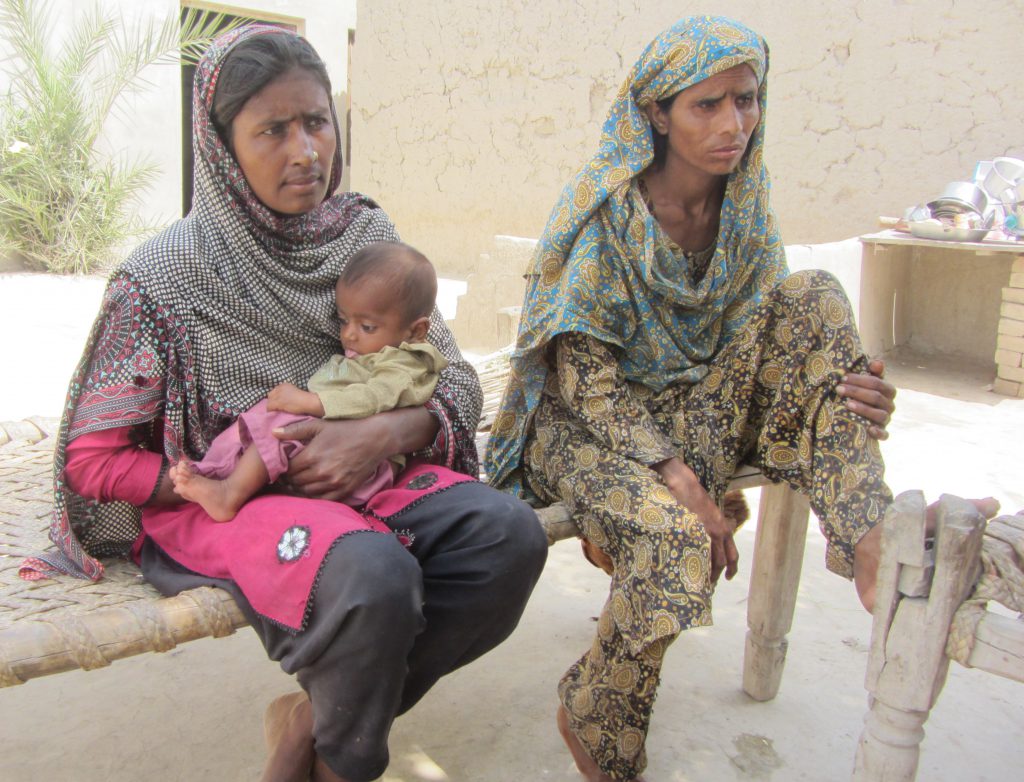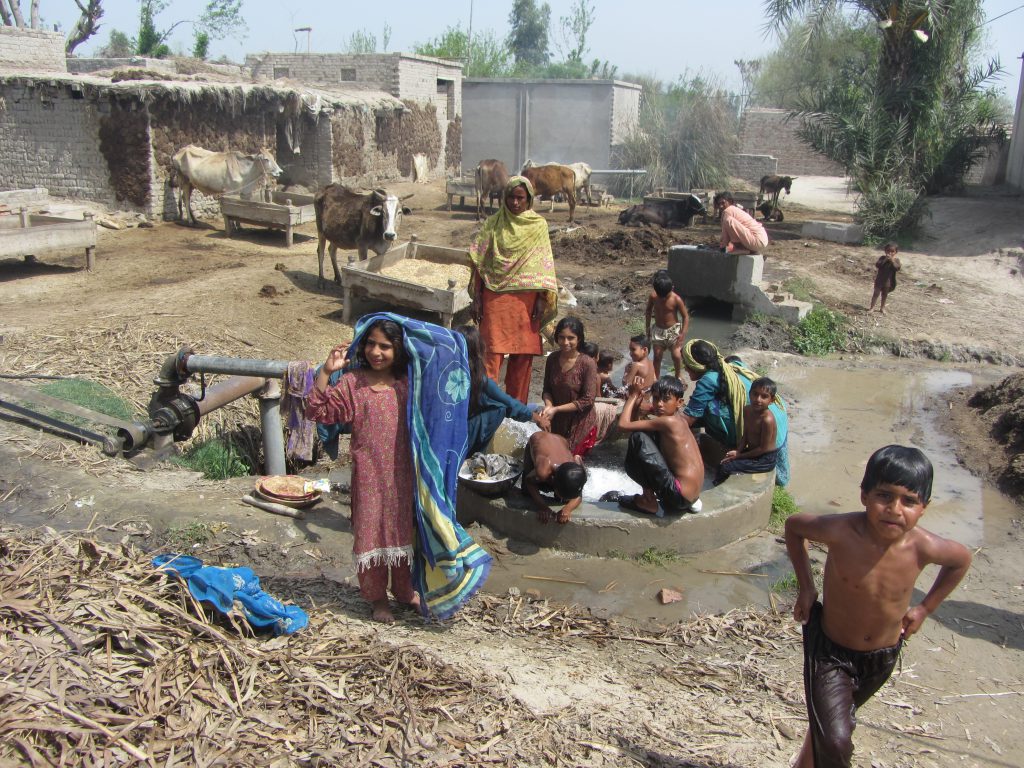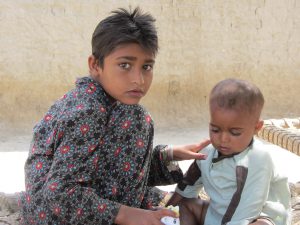It was the wettest March in the past century in large parts of both the Indian and Pakistan Punjab, crushing the hopes of thousands of farmers whose wheat crop was destroyed in the harvesting season. In Pakistan Punjab’s southern Layyah district, for instance, farmers say the heavy rain and hailstorms that continued into April have left them struggling to feed their families.
They were already late in harvesting the wheat crop, which needs to be ripened by the hot sun. Normally the cutting of wheat occurs in the last week of March or first week of April. However, the cutting was delayed by several weeks because of the wet and cool weather.
The weather this spring was so uncertain that a storm described as a freak ‘mini-cyclone’ tore roofs of buildings and brought down trees and power poles in north Pakistan in late April, killing 45 people in Khyber Pakhtunkhwa province.
The vagaries of the weather have hit them all, say the farmers.
“The recent hailstorms have not only ruined our wheat crop, they have destroyed all the vegetables we planted during the winter months: okra, bitter gourd, pumpkins and zucchini and fruits like water melon. What are we going to feed our children?” asked Tasleem, only 20 and already the mother of three children, as she sat on a charpoy outside her mud house in Dir Khan village of Layyah district.

Nearby, a couple of cows nibble at some mouldy looking fodder. “The fodder we planted for our livestock was also ruined. The season for planting certain foods has now passed; for example we can’t plant watermelon in the summer months.” Tasleem and her neighbours, all small farmers with limited landholdings, plant just enough to sustain themselves. Others work as labourers for larger farmers in the area for daily wages during harvesting season.
“Climate change is playing havoc with our lives; the summers are intense and the winters are intense; it is affecting our crops. But is seems to be Allah’s will, what can we do but to try to save ourselves,” said a farmer.
They all know about climate change because of trainings given to them by the Doaba Foundation, a local NGO and member of the Indus Consortium, which is running a three-year campaign, Grow, in Layyah. The campaign, funded by Oxfam, focuses on climate and food justice and in its first year aims to spread awareness about climate change and what people, especially small farmers who grow their own food and are the most vulnerable, can do to address its impacts.
The farmers in Layyah, on the banks of the Indus, have already suffered from devastating floods in 2010 and 2013. The district consists of fertile green areas near the river where the village of Dir Khan is located and also a sandy, desert area where limited agriculture takes place. This year, hailstorms completely devastated the gram crop and green fodder that was almost ready for harvesting in the rain fed desert areas. The local people are now demanding that the government give them compensation for their ruined crops, as they have done for rice farmers in upper Punjab.
“Southern Punjab is so neglected,” complained Fareedullah Khan, a small farmer in Layyah. “The government should compensate us for our ruined crops and declare the affected union councils in the district as ‘calamity hit’ areas.”
Climate strategy for farmers
According to climate expert Dr Qamar-uz-Zaman Chaudhry, former director general of Pakistan’s Meteorological Department (PMD) and lead author of the country’s National Climate Change Policy (NCCP), “Both central and northern Punjab in Pakistan and India have seen the wettest March in the past century of recorded history. This is very unusual; a manifestation of climate change and it has damaged quite a bit of our crops as well as those in India.”
The NCCP, which was approved by the federal cabinet and launched just before the general elections of 2013, is yet to be implemented. The policy clearly states: “The important climate change threats to Pakistan are considerable increase in the frequency and intensity of extreme weather events, coupled with erratic monsoon rains causing frequent and intense floods and droughts” amongst other issues like glacial melting in the north and seawater intrusion into the Indus Delta in the south.
The current government led by -Nawaz Sharif recently restored the federal climate change ministry, which it had earlier demoted to a division, and appointed a full time climate change minister, Mushaidullah Khan.
According to Oxfam, the last four years of continuous monsoon flooding in the country has had a long-term impact on small farmers’ ability to produce food.
Oxfam says that the meteorology office needs to share information about weather patterns with local farmers, like has happened in Thailand.
At the moment, PMD only posts weather advisories for farmers on their website and most small farmers in Pakistan don’t have access to the internet. The advisory for April, which has proven to be a very wet month, noted: “Wheat crop is in different maturity stages. Farmers are advised to stop the irrigation of the crops keeping in mind the occurred and expected rain in the agricultural plains of the country.”

But, as Qamar-uz-Zaman pointed out, the early season forecast provided did not include an overall seasonal forecast, which is what the farmers need. He says the government should also survey the affected areas and give farmers some relief.
“Otherwise it will be very difficult for smaller farmers to survive; last year they did not receive good prices for their wheat crop and now with widespread damages in many areas, it will become very difficult for them to sow new crops.”
In his view, there won’t be a food crisis in the country as a bumper crop was expected in other wheat growing areas like Sindh and there was still considerable storage leftover from last year’s crop. “However, specific areas where crops have been destroyed will place individual farmers in a fix, especially in the Punjab province”.
The government echoes this optimism.
Sikandar Hayat Khan Bosan, minister for national food security and research, recently told the media: “Though untimely rainfalls have created issues at some places, yet I am confident that the wheat output target will be achieved.”
The Federal Committee on Agriculture aims to produce 26 million tonnes of wheat in the current crop year. The country harvested 25.29 million tonnes of wheat in the last season. In Pakistan, farmers grow just one wheat crop a year and planting starts in October, with harvesting from March onwards.
The minister claimed the wheat crop has largely been“unscathed apart from some minor damage caused by hailstorms”.

